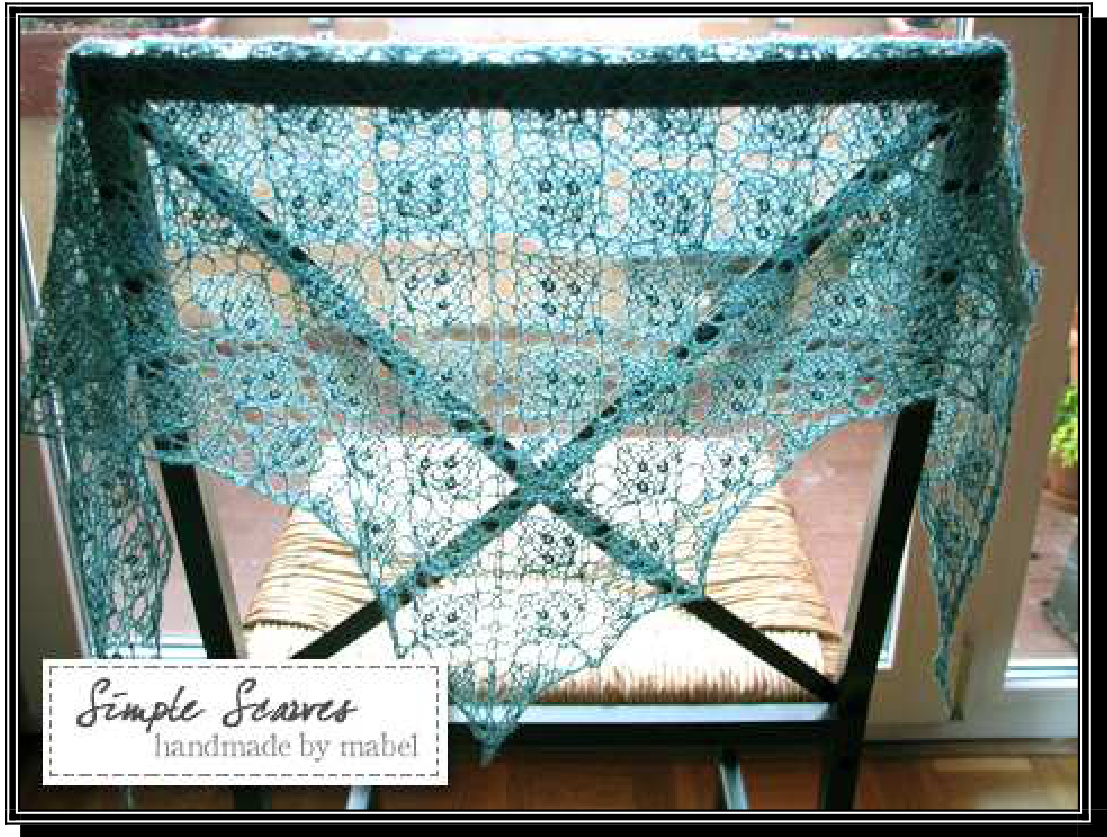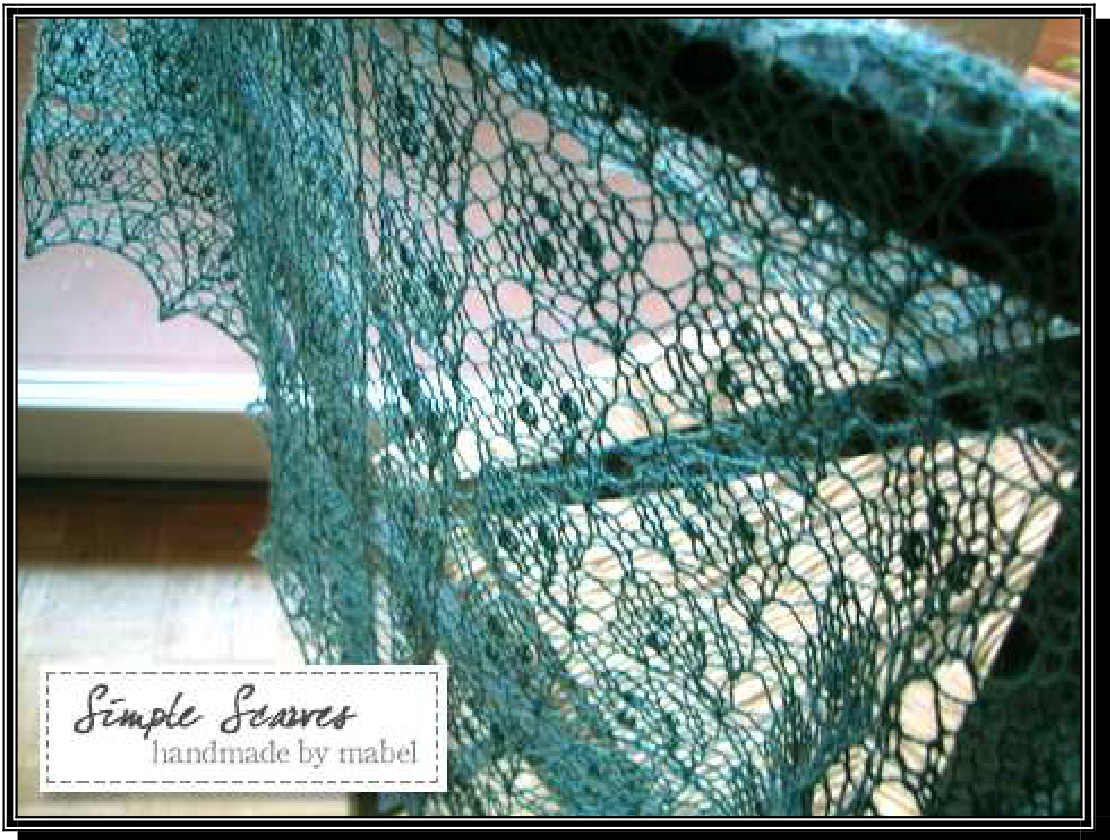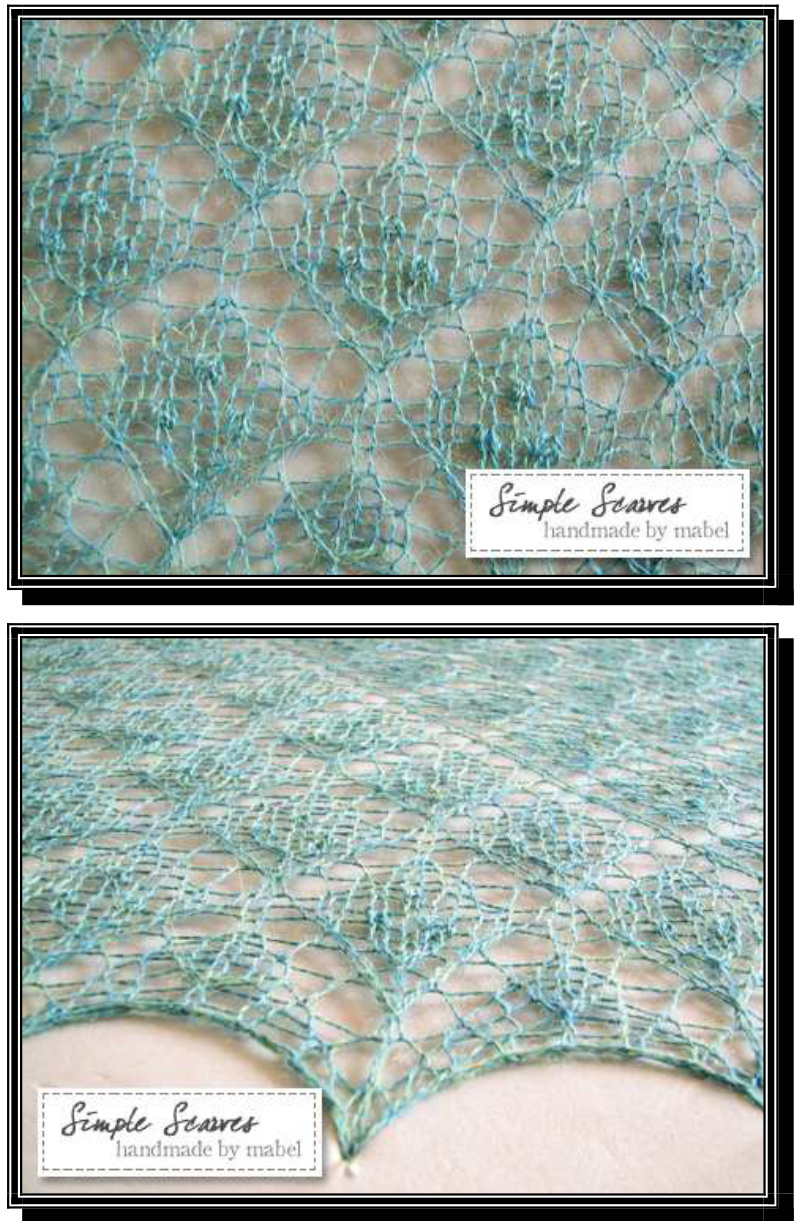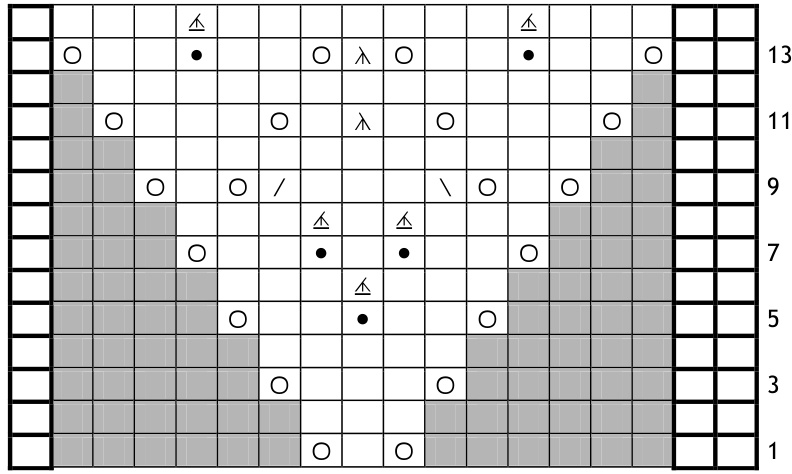
① 2008 Mabel Teoh

2 ince I started knitting, I've always been fascinated with lace shawls. I still remember the frustration yet excitement when I finished my first shawl and then, subsequently, the feelings that accompanied the other shawls that followed on - Shetland Triangle, Angel Lace, Swallowtail, Flower Basket and so forth. Yet, deep down inside, I've always wanted to knit up something to call my own and finally, after nearly two years of reading, knitting and plotting, A Leaf In A Leaf awaits. Based on the Leaf Lace stitch from Knitting Lace Triangles by Evelyn A. Clark, I was inspired to add in nupps - nupps that I have seen earlier in the Swallowtail - together with this stitch, creating a tiny leaf in, well a bigger leafThis shawl remindsme of the joys of spring and the colours of autumn, conjuring up vivid pictures of leaves floating gently in the breeze. Ive knitted this in smooth laceweight yarn (Knitpicks Alpaca Cloud) with a regular 4.5mm needle, creating a floaty yet drapey shawl. FINISHED SIZE 46”" wide across the top edge and $19^{\bullet}$ long from the center top edge to the tip, after blocking YARN About 500 yds of laceweight yarn for 10 (and above) number of repeats (KnitPicks Alpaca Cloud was used for this project, which features just 8 repeats - less than a fullskein was used!) USD7/4.5mm circulars and 9mm for binding off. Adjust needle size to obtain correct gauge NOTIONS Crochet hook, waste yarn, markers, rust-proof pins for blocking
GAUGE
20 to 22 sts over 4" square in stockinette stitch before blocking. This is only a suggested gauge; you can feel free to change the needle size to suit the yarn weight chosen. Bear in mind that a tighter or loose gauge will have an impact on the amount of yarn needed plus overall size and feel of the shawl.

NOTES You can easily work a larger shawl by adding more pattern repeats (Chart B). Bind offs must not be too tight; the looser the bind-off, the more elongated the scallops will be.
ABBREVIATIONS
$k=\mathsf{k n i t}$ $\mathsf{p}=$ purl st(s) $=$ stitch/es k2tog $=$ knit 2 together ssk $=$ slip 1 st as if to knit, knit 1, slip first stitch onto the knitted stitch p3tog $=$ purl 3 together sl1, k2, psso $=$ slip 1 as if to knit, knit 2, slip first stitch onto the knitted stitch
KNITTING UP THE SHAWL
With a crochet hook and waste yarn, chain 4. Using shawl yarn and knitting needles, knit up 2 sts in the 2 of the bumps on the back of the chain. Rows_ 1-6:Knit Row 7: k2, pick up and knit 1 st in each of the 3 garter ridges along side of shawl yarn tab; unzip waste yarn and put 2 shawl yarn sts onto needles and knit those 2 sts (7 sts) $\circledcirc$ 2008MabelTeoh All rights reserved. Unauthorized reproduction slightly prohibited. This pattern is for your personal, non-commercial use only. You may not reproduce this patter for distribution, sale or any other purposes. Finished items made from this pattern may not be sold under any circumstances. Work rows 1-14 of Chart A before continuing with Chart B. Repeat at least 8 times for a small-sized shawl (as per measurements stated above) or repeat until the desired length is reached. Change to Chart C for the edging and bind off loosely. DO NOT weave in the ends.
FINISHING
Soak shawl for at least 20 minutes. Wrap in a towel to remove excess water. Lay on a flat surface, smooth out and using pins, start by blocking the center, edges and tip to a same distance before pinning the top edge completely. Each scallop point must be pinned out along the side edge at an even tension/distance. Leave the shawl in its place until thoroughly dry. Then unpin, weave in ends and trim off the excess.

CHART A

CHART B
LEGEND
k on RS; p on ws slip 1, k2, psso yo ssk nupp (k1,yo,k1 in same stitch) k2tog p3tog

CENTER
CHART C

CENTER









